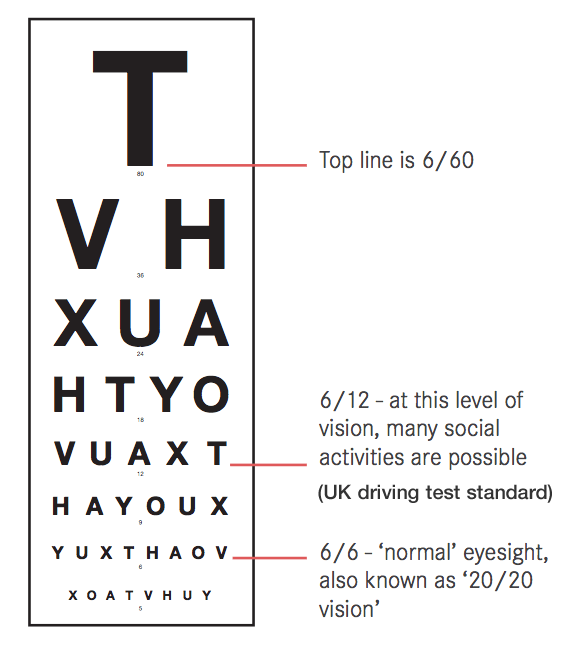020 7490 7222 Book an appointment
Many people refer to ‘perfect’ vision as ‘6/6’ or ‘20/20’ (US notation measured in feet), but this is not strictly true – these terms refer to ‘average’ vision. If you achieve a vision measurement of 6/6, this means that you can see at a distance of 6m what an average person also sees at the same distance. Our ability to see detail at far distances is a function of our entire visual system, from the front of the eye to an area at the back of the brain that processes visual information. The integrity of each component and how they all work together vary depending on what we inherit from our parents and how our eyes develop during early childhood. This means that in a population of people with healthy eyes, the best vision achieved would range from slightly better than ‘average’ (6/5 or 6/4) to slightly worse (6/7.5). To give you an idea of what these values mean in our day-to-day life, a person is legal to drive a car in the UK if they can achieve a vision measurement of 6/9 – 6/12 – the ability to see at 6m what an average person sees at 9-12m.
